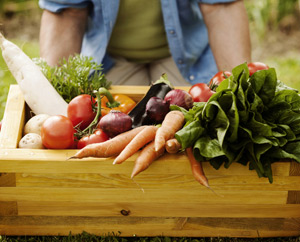health guides
Flavonoids Favourable for Reducing Diabetes Risk

Factoring in flavonoids to uncover diet-diabetes connections
In a study published in the journal Clinical Nutrition, researchers used a method called meta-analysis to combine four previously published studies on dietary flavonoids and type 2 diabetes risk. Flavonoids are a group of nutrients found in:
- many vegetables, fruit, and pulses (beans and peas),
- some spices and herbs,
- green and black tea, and
- red wine and chocolate.
The four studies created a total sample of 284,806 adults, a group in which 18,146 cases of newly diagnosed type 2 diabetes were reported. From this large pool of data, the researchers concluded that compared with adults who consumed the least amount of flavonoids from food, those consuming the most flavonoids were 9% less likely to be diagnosed with diabetes.
After accounting for other health factors that may be related to a risk of type 2 diabetes, including age, gender, body mass index, waist-to-hip ratio, other dietary factors (energy and fat intake), tobacco and alcohol use, exercise habits, and family history of diabetes, the analysis revealed that for every 500 mg per day increase in flavonoid intake, the risk of type 2 diabetes was reduced by 5%. These beneficial effects of flavonoids were most pronounced in people with an average age greater than 40 years, and were strongest in studies of 20 or more years’ duration.
How much do you need to eat to get 500 mg of flavonoids? Here are some approximations:
- 1 serving blueberries (1/2 cup) ~200 mg flavonoids
- 1 cup of green tea (~6-8 ounces) ~ 200 mg flavonoids
- 1 serving blackberries (1/2 cup) ~ 225 mg flavonoids
- 1 ounce dark chocolate (> 70% cocoa content) ~ 100 mg flavonoids
The big picture
This study suggests that flavonoid-rich foods may protect against type 2 diabetes, though it included only observational studies and therefore cannot prove cause and effect. Still, the results agree with previous research, and with the overall science on diet and type 2 diabetes risk: enjoying more plant foods and drinks made from plants, such as tea, appears to reduce the risk of developing type 2 diabetes.
These lifestyle tips and tricks can help you put this information to work in your get-healthy, stay-healthy plan!
- Focus on the big picture. Avoid getting bogged down in details, such as which foods have what flavonoids. The bottom line? Plant foods are tops for maintaining your health.
- Color yourself healthy. Frequently eat something fresh and unprocessed from every colour group. Think white (onions and cauliflower); purple, red, and blue (berries); green (kale, chard, and broccoli); and yellow-orange (carrots and oranges). You don’t need to eat every one of these colours every day, just try to include them all in your diet regularly.
- Drink up. Instead of fizzy drink and sugary fruit drinks, try green, black, or white tea. Enjoy iced tea in the summer and hot tea in the winter.
- Juice smartly. If you drink juice, have a maximum of 6 ounces daily (every 1/3 to 1/2 cup of juice contains 15 grams of carbohydrates), make it 100% fruit juice, and remember that the darker the colour—think grape, blueberry, blackberry, and cherry—the better.
- Walk it off. Along with nutrition, exercise is a powerful tool for reducing diabetes risk. A simple 20 to 30 minute brisk walk daily can significantly improve health for people looking to avoid—or better manage—type 2 diabetes.
(Clin Nutr 2013; doi:http://dx.doi.org/10.1016/j.clnu.2013.03.011)
Copyright © 2024 TraceGains, Inc. All rights reserved.


 We are proud to announce that
We are proud to announce that  As the market evolves, customers increasingly request a wider variety of omega-3 options for their lipid...
As the market evolves, customers increasingly request a wider variety of omega-3 options for their lipid...  Maintaining healthy glucose levels is crucial for preventing metabolic conditions like diabetes,...
Maintaining healthy glucose levels is crucial for preventing metabolic conditions like diabetes,...  Looking at formulating a new vitamin blend? Discover
Looking at formulating a new vitamin blend? Discover 







































